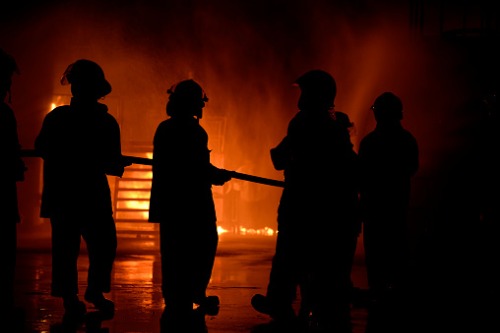

With bushfires continuing to burn, albeit in smaller numbers than in previous weeks, Insurance Business has recently reported on some of the work the industry has been doing in relation to the crisis. On top of their expected roles we’ve seen insurers deploy everything from soft bears and helicopters to premium waivers and mental health support. But how will the continuing crisis impact the industry?
There are around 70 bushfires being attended to by the Rural Fire Service (RFS), while the most recent estimates from the Insurance Council of Australia (ICA), issued on January 23, put the claims figure at around 20,000, with a current estimated value loss of $1.65 billion. To put that into context, the hailstorms in Sydney and NSW in late December 2018 generated insured losses of $1.4 billion while the Townsville flooding in early-2019 resulted in losses of $1.3 billion. And as the flames continue to roar, the current figure is expected to climb further.
Insurance Business spoke to Michael Vine, a director in the financial services ratings team at S&P Global Ratings, back in-the-midst of the bushfire crisis in early-January. He explained that even with the bushfires on such a scale this early during the season, insurers should be able to absorb losses stemming from the crisis.
“These type of catastrophe claims to a degree are anticipated, so allowances are made in insurers’ budgeting for forecasting for profitability,” said Vine. “While these are likely to exceed those provisions or estimates, the losses will be borne by reinsurance protection that insurers have.”
A report published by S&P at the turn of the year said that predictions on the effect of the fires were “somewhat uncertain.” The report noted “the events could pressure premium rates in future as insurers are forced to pass on likely higher reinsurance costs.” It noted too that insurers should be able to withstand the losses: “insurers have strong stop-loss and aggregate reinsurance programs to absorb losses at or around their natural peril allowances, as well as further extensive catastrophe reinsurance protection.”
Nigel Cade, director at The Insurance Claims Centre, spoke to Insurance Business before the Australia Day weekend and said that even though he expects insurers to be able to absorb the associated losses, the potential for storms and cyclones along the east coast, as well as continued bushfires, will stretch the industry.
“Yes, the insurers are probably adequately covered,” said Cade. “I think they will have adequate cover, but we’ve still got more weeks of bushfires and storms to go on – with cyclones and storms to come, it will make it very interesting in my view.” Cade believes that the ‘perfect storm’ has brewed so that, if storms do hit parts of the country as we move into autumn, the losses already sustained by the industry due to the bushfires would be further exacerbated.
In terms of reinsurance, two in-depth reports have been released that share the belief that while the industry is well placed to sustain itself, the unprecedented severity of the current bushfire crisis will bring some economic damage.
A recent report compiled by Aon noted that the current crisis may rival the costliest in Australia’s history.
“The most expensive bushfire seasons in Australia in terms of insured loss were $1.76 billion in 1983 and $2.16 billion in 1967,” the firm said. “But they all will be potentially challenged by the eventual total insured loss from the 2019-20 bushfire season as losses from the bushfires continue to rise as access to fire damaged regions opens and damage assessments continue.”
While Aon noted that the economic loss is likely to be extreme – “the nature of the current losses from the bushfires means there is the possibility that reinsurance impact will not be as significant as some previous events.”
The most recent research on the issue comes from US credit rating agency, A.M. Best, who corroborate the prevailing view that however large the impact of the current fires, insurers are well placed to sustain such losses.
“Ultimate loss estimates won’t be determined for some time, but on the expectation that reported losses will rise further, the 2019/20 bushfire season will clearly be one of the costliest on record,” A.M. Best said. “We are of the view that Australian insurers are well placed to withstand the bushfire losses, aided by strong capital positions and support from reinsurance partners - the Australian insurance market is no stranger to catastrophe events, given that Australia is exposed to a wide range of natural perils, including flood, hail, cyclone, and earthquake.”
The agency admitted that the insurance industry has “shown itself capable of absorbing natural catastrophe losses over recent years,” and expects that to be the case regarding the 2019-20 fires. However immense the impact may appear; it seems that the industry is experienced and prepared enough to contend with the losses resulting from the fires. But with fires still being fought, storms already having hit and more expected over the coming months – 2020 may prove a costly year for insurers.
